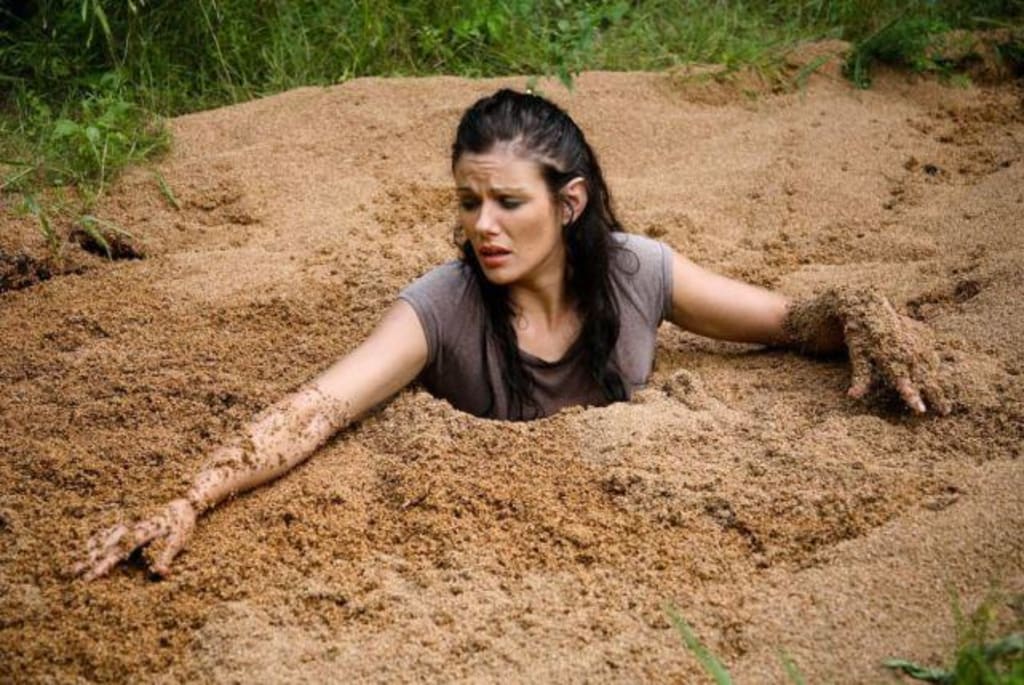
To listen to today’s reflection as a podcast, click here
According to a 2010 article in Slate magazine, almost 3% of the films produced in the 1960s included a scene in which a character got trapped in quicksand.
I’m pretty sure I saw every one of those movies. The Saturday matinees at our neighborhood theater – whether Westerns, thrillers, monster flicks, or pirate sagas – almost always showed someone shrieking in terror as he or she disappeared into an unforgiving, sludgy pool.
It was the perfect way to get rid of one of the “extras.”
If we do a quick check of the facts about quicksand, however, it becomes clear that most of us have no reason to fear such a cinematic demise.
Quicksand is an unstable mixture of sand, mud, or clay, mingled with water and air, which collapses under any weight or stress (such as the sudden intrusion of a hiking boot). These soupy mixtures (which may, at first glance, appear entirely solid) are found the world over – especially near swamps, tidal flats, and riverbanks.
Hollywood would have us believe that quicksand is capable of engulfing an entire convoy of Teslas. But the good news is that such swampy stretches are almost always just a few inches or a few feet deep.
That makes them annoying but not generally life-threatening.
The key is to remember Douglas Adams’ timeless counsel in The Hitchhiker’s Guide to the Galaxy: “Don’t panic.”
Since your body is less dense than a gloppy mixture of mud or sand, you can actually float atop quicksand – but only if you stop thrashing. Pushing hard to try to get free actually drives other body parts deeper into the muck.
Furthermore, if you somehow manage to sink all the way up to your chest, breathing might become a challenge.
So listen to the experts: Slow down. Relax. Lie flat on your back, with your arms extended at your sides. Gently move toward firmer ground until you can roll yourself to safety. Yes, that’s just as incredibly messy as it sounds, and you may end up leaving your backpack and shoes behind.
But at least you’ll live to see another Saturday matinee.
There’s an oft-repeated saying in 12-step communities like Alcoholics Anonymous: “If you want to get out of it, you have to get into it.”
Instead of denying that you’re actually stuck in a real mess, or praying that God will magically transport you to the fabled Land of No Problems (without any effort on your part), the path to healing almost always involves facing reality. That usually means standing up to what scares you more than anything else.
Bible teachers are fond of pointing out that “Don’t be afraid” is the #1 command on the pages of Scripture.
What they don’t always mention is what comes next.
When God tells both Old and New Testament heroes not to be afraid, he usually, in the very next breath, instructs them to do the very thing that fills them with terror.
In his book Steps, pastor John Ortberg points out that God says, “Don’t be afraid, Moses – go and confront Pharaoh.” “Don’t be afraid, Gideon – leave the threshing floor and take on the Midianites.” “Don’t be afraid, Elijah – go back and face Jezebel, who says she wants to kill you.” “Don’t be afraid, Joseph – go ahead and take Mary as your wife.” “In all those cases, when people are afraid, ‘Do not be afraid’ means ‘Do exactly what you’re afraid of.’”
It’s just like quicksand: If you want to get out of it, you have to get into it.
Ortberg continues, “The promise in each case is not that they will be spared the discomfort of fear. Quite the opposite. It’s that precisely in the midst of that discomfort they will discover that God is with them.”
God is with you in whatever mess you’re facing today.
God is with you in the misery of a family split.
God is with you in the muck of addiction.
God is with you in the quagmire of depression.
God is with you in the deep swamp of worry.
God is with you in the seeming hopelessness of the daily news.
Don’t be afraid.
The God-who-is-with-you will help you confront reality and face what seems impossibly scary.
And, by God’s grace, you will soon enough find yourself once again on solid ground.
